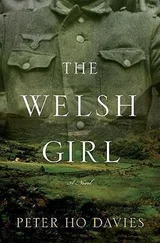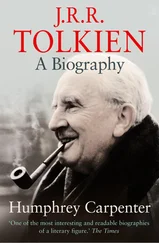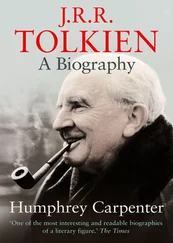Friendly Fire
Alaa Al Aswany
Translated by Humphrey Davies

To Abbas Al Aswany, my father, who taught me
Cover Page
Title Page Friendly Fire Alaa Al Aswany Translated by Humphrey Davies
Dedication To Abbas Al Aswany, my father, who taught me
Preface
The Isam Abd el-Ati Papers
The Kitchen Boy
And We Have Covered Their Eyes
To the Air Conditioning Attendant of the Hall
An Administrative Order
When the Glass Shatters
Latin and Greek
An Old Blue Dress and A Close-fitting Covering for the Head, Brightly Colored
Izzat Amin Iskandar
Dearest Sister Markarim
The Sorrows of hagg Ahmad
Waiting for the Leader
A Look into Nagi’s Face
Why, Sayed? (A Question)
Games
Boxer Puppies, All Colors
Mme Zitta Mendès, A Last Image
Also by Alaa Al Aswany
Copyright
About the Publisher
1
THE FIRST FILM SHOW IN HISTORY took place in December 1895 in Paris, at the Indian Salon of the Grand Café, on the Rue des Capucins. One year later, the cinema arrived in Egypt. The first film was shown in Alexandria in November 1896 in a hall owned by an Italian named Dello Strologo. This was a unique event in the life of Egyptians and foreigners living in Egypt alike, and the press of the day was filled with enthusiastic commentary on the new invention. Even the extortionate prices charged for tickets did not put people off. Showings lasted about half an hour and were broken up into a number of separate episodes, none exceeding a few minutes in length and consisting for the most part of scenes from domestic life, on the streets, in forests, and at sea. Despite the naiveté of the subjects and the primitive filming techniques, people were enthralled by cinema, paid for their tickets, and hurried into the screening hall, where they sat on chairs in rows waiting for the magic moment when the lights were extinguished, everything went totally black, and the scenes began to appear on the screen. No doubt, the pleasure felt by the first viewers as they watched real life on the screen for the first time was greater by far than our enjoyment today of the art of the cinema, despite which, that exquisite pleasure brought with it at the time a curious problem. The audience, in that state of extreme excitement that would seize them as they followed the film, would often become so engrossed in its events that they would imagine that what they were seeing was indeed real. Thus, if the sea appeared to be rough with high waves, they would feel terrified, and no sooner did a fast-moving train appear on screen, puffing thick smoke, than many would let out cries of genuine panic and rush to exit the hall, fearing that the train would crush them. When these unfortunate events were repeated Dello Strologo instituted a new tradition: he would wait for the audience members in front of the hall and accompany them to the screen. Then, taking it in his fingers, he would say, “This screen is just a piece of cloth, not much different from a bed sheet. The images that you are going to see are reflected on the screen and do not originate within it. In a short while, you are going to see a speeding train. Remember, gentlemen, that this is only an image of a train, and can therefore do you no harm.”
When we read of these happenings today, more than a hundred years later, the panic of the audience appears bizarre and laughable. Nevertheless, to this day, some readers of literature continue, most unfortunately, to make the same confusion between imagination and reality, and this is a problem from which I, like many other novelists, have suffered greatly. In my novel The Yacoubian Building , I presented two characters, Abaskharon and Malak—two brothers from a poor Coptic background distinguished by their craftiness, eccentricity, and vivacity. In the course, however, of their bitter struggle for survival, they are by no means above lying and stealing. After publishing the novel, I was taken aback to find a Coptic friend of mine telling me reproachfully, “How dare you present such a debased image of the Coptic character?” My response (which he found quite unconvincing) was that I hadn’t been presenting the character of the Egyptian Copt in general but that of fictitious characters who happened to be Copts in just the same way that the novel teems with corrupt Muslim characters, from which fact it was quite impossible to infer that all Muslims are corrupt. Likewise, in my novel Chicago, I present a character called Shaymaa, a young woman who wears the headscarf, has come from the Egyptian countryside to Chicago to be a student, and whose stay in America has made her rethink her conservative upbringing. Given that she falls in love with a colleague, with whom a physical relationship gradually develops, and that the novel was published in installments in the newspaper al-Dustur , I would receive a weekly dose of insults and curses from readers of extreme religious views because, in their opinion, by presenting as a character a young woman who wore the headscarf and had abandoned her principles, I had harmed the image of all Muslim women who wear the headscarf and, consequently, of Islam itself.
I thought long about the question, “What could drive an educated, intelligent reader to consider the behavior of a fictitious character in a work of the imagination an attempt to harm the image of religion or of a section of society?” To be fair, the responsibility for this confusion should not be placed entirely on the shoulders of the reader. On the contrary, it is connected by fine threads to the nature of literature itself, for two reasons. The first of these is that a large part of the pleasure of reading may be attributed to the fact that it gives power to our imaginations. We take pleasure in imagining the events of the novel and its characters in ways that suit ourselves. These imaginings cannot be realized without the intervention of make-believe, meaning that we are incapable of taking pleasure in reading without deluding ourselves, fleetingly, that what we are reading is not made up but has actually happened. (It is because of this make-believe that the lights are turned off in theaters, whether of stage or screen.) It follows that the confusion that occurs in the minds of some between imagination and reality is an indicator of the artist’s excellence in the execution of his work, since he has succeeded in making the reader’s make-believe seem true, though, in this case, the make-believe is exaggerated and causes him to cease to distinguish between form and reality.
The second reason lies in the fact that literature is an art of life. The novel is a life on paper that resembles our daily lives, but which is more profound, significant, and beautiful. It follows that literature is not an isolated art. On the contrary, its matter is life itself and it intersects with the human sciences such as history, sociology, and ethnology. This intersection is a double-edged sword. On the one hand, it provides the novelist with inexhaustible ammunition for his writing while on the other, negative, side, it drives some to read works of fiction as though they were studies in sociology, which is fundamentally mistaken. The writer of fiction is not a scholar but an artist impacted emotionally by characters from life, who then strives to present these in his works. These characters present us with human truth but do not necessarily represent social truth.
Читать дальше













